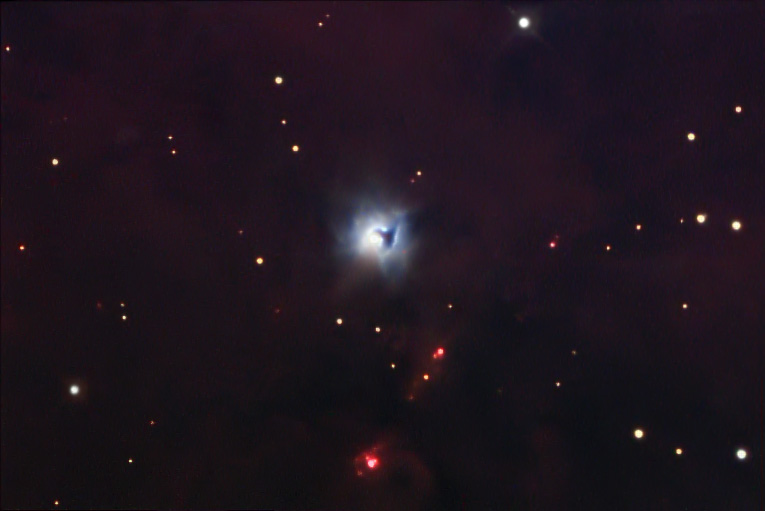|
This very intriguing object is located a mere 1.5 degrees south of the famous M42 Great Orion Nebula, and is virtually unknown in the literature other than a casual mention. Unusual for a reflection nebula, a dark nebula is superimposed on its ragged face, and the entire affair is immersed in a sea of glowing red hydrogen nebulosity. The central star is V380 Orionis. It is a very young star in the Orion Molecular cloud. The origin of the red nebulosity around NGC1999 has been traced to a billowing wind emanating from this object. Also in the field are small deep red Herbig Haro type objects below the nebula here HH1 and HH2, first discovered in 1950 by George Herbig and represent two clusters of deeply embedded young stars which power oppositely directed bow shocks. A number of small red stellar objects in the field belong to the same category. This field is just the tip of the iceberg for interesting objects, the surrounding fields contain numerous other enigmatic objects - perfect targets for our CCD windows to the night sky. NGC1999 itself is 20 arcminutes in size and involves IC427 and IC428. Processing: A RED luminance was used here. Why for a blue nebula? because the nebula itself is very bright, and I wanted to make sure I recorded the faint red background glow in the region as well. An unexpected bonus was the numerous HH objects. The RGB image used for combining with the L channel was processed with DDP to make sure the red background was present. Instrument: 12.5" f/5 Home made Newtonian Platform: Astrophysics 1200 QMD CCD Camera: SBIG ST7E w/Enhanced Cooling Exposure: LRGB = 60:20:20:36 (RGB Binned 2x2) Filters: RGB Tricolor Location: Payson, Arizona Elevation: 5150 ft. Sky: Seeing FMHW = 2.7 arcsec, Transparency 8/10 Outside Temperature: 0 C CCD Temperature: -35 C Processing: Maxim DL, Photoshop, AIP4WIN, PW Pro. |
||
|
|
||
|
FastCounter by bCentral |
